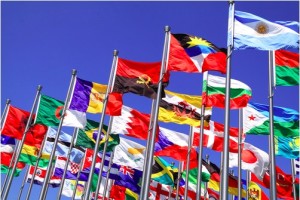Culture’s Impact on Social Marketing
 Culture is one of the largest components of how we communicate: not just how we say something but how we choose the tools we use to get a message across. This is as true for social media as it was for the telegraph.
Culture is one of the largest components of how we communicate: not just how we say something but how we choose the tools we use to get a message across. This is as true for social media as it was for the telegraph.
For example, if you want to reach a Latino audience, going all out on a broad social media strategy isn’t going work. Only about two-thirds of Latinos reported going online in 2010, according to a 2010 Pew study. The same report shows that while Latinos are no more likely than whites to use a phone for internet access, six percent of Latinos use internet-enabled phones without having a home internet connection, compared to just one percent of whites. These numbers mean a lot for choosing how to connect with Latino audiences: mobile is far more important than in other communities.
The Culture Factor
Many of the numbers associated with race and social media — or internet usage in general — blur when you start considering how groups of the same socio-economic levels but of different races compare. But certain trends, like the mobile usage in Latino communities, create spikes that can impact how you might plan a social media campaign.
There are also cultural factors that go much deeper than how a particular group accesses the web and which social media tools they choose. When you plan a campaign, you need to take as much demographic information into consideration as possible. Consider the 2010 U.S. Census results for the geographic distribution of the black population: 55 percent of the population lives in the South. But there are interesting clusters all over the country that can impact the content of the social media locals use. There is a growing community of Somali immigrants in Denver, for instance, as well as in other Colorado towns. The profile of this cultural group, while included in the Census as ‘Black’ is very different from African-American populations in cities like Atlanta. Their online activity starts in community centers like the East Africa Community Center in Greeley, with a much higher emphasis on job skills and using computers as a tool. Reaching them online requires a more targeted approach.
Wherever possible, it’s important to dig deeper than just the broadest strokes painted by demographics. Knowing numbers isn’t the same as knowing the community you’re trying to reach. You may not always have the resources to spend time with members of the audience you’re trying to reach through social media, but without even the basic insights of what tools that audience uses to communicate, you aren’t going to be able to effectively reach them.
Beyond Our Borders
This is just a picture of social media in the U.S. The moment you consider crossing international borders, the social media picture changes dramatically. One of the largest social networking sites in the world, Qzone, has an estimated 480 million users, the majority of whom live in China. The differences in how users interact with sites could greatly hamper certain websites on a fundamental basis: consider the ‘nymwars’ experienced by Google when the company required users to sign up for Google+ using their actual names. There was an uproar — but nothing like what the company would have faced if it had focused its launch in a country like Japan. Anonymity is the norm for social media users in that country — most use avatars and nicknames on social networks, because of privacy concerns and cultural norms.
There are many international users on the social media sites you may rely on — but they may use those same tools in very different ways. Different countries and cultures may have different concerns about sharing too much information online or different laws about how they can legally do business online. Studying the cultures behind the users on different social networking sites can require thinking about the way those sites work in ways you’ve never imagined.
How we get online is as important as why
But it’s not just a question of what sites users in other countries may access or what they do there: there are fundamental differences in how we get online. In Africa, there isn’t the type of infrastructure available to use computers on the scale that we see in the U.S. Instead, mobile is the main method of accessing the internet.
Conclusion
As you’re developing a social media campaign (or even just interacting with someone from a different cultural background online), it’s crucial to consider the specific audience you’re talking to. You need to not only know the demographic data, but what that information means in terms of how they use the internet.
Originally Posted On Brian Solis Blog
